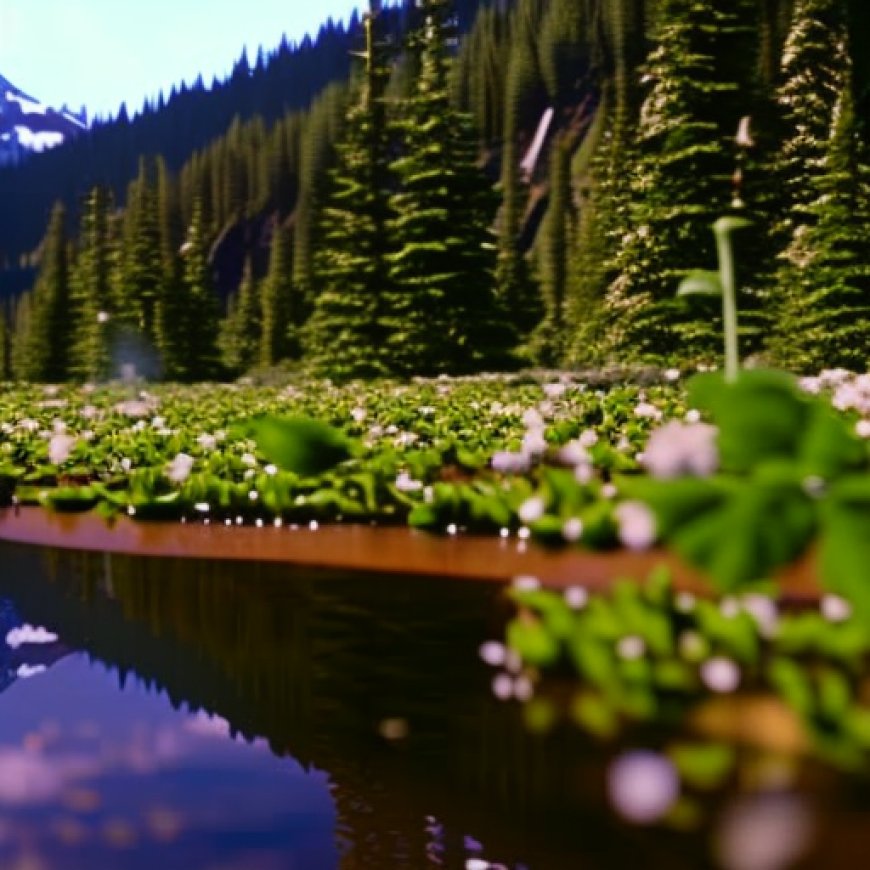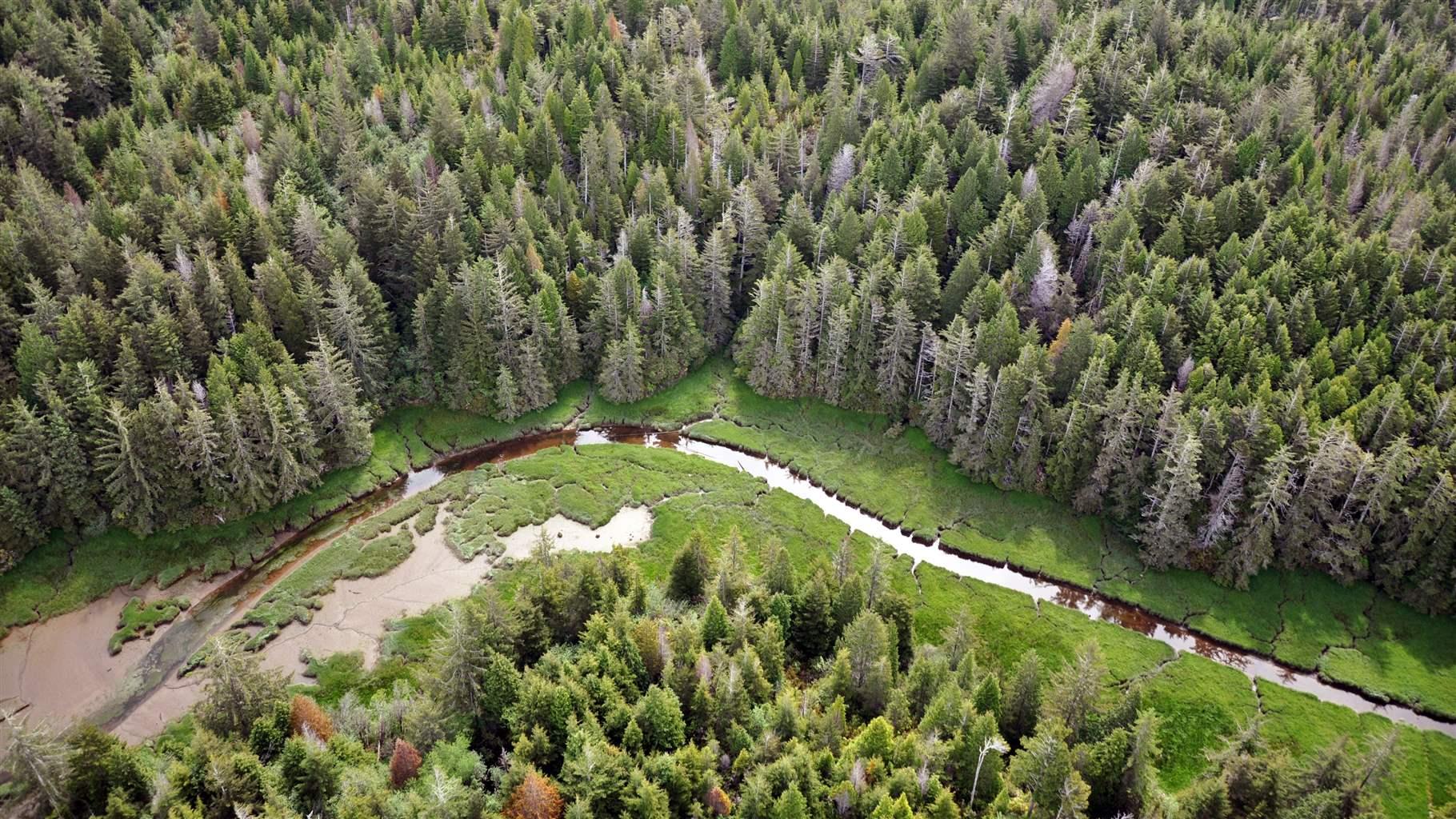Oregon Elevates Natural and Working Lands to Help Slow Climate Change
Oregon Elevates Natural and Working Lands to Help Slow Climate ... The Pew Charitable Trusts


Innovative Law in Oregon Advances Sustainable Development Goals

In a forward-looking move, leaders in Oregon have committed funding to utilize farms, forests, and wetlands in the effort to blunt the effects of climate change. On July 27, Governor Tina Kotek signed the Climate Resilience Package (H.B. 3409) into law, helping to ensure that the state’s natural and working lands can continue to remove or sequester atmospheric carbon dioxide. The package establishes a permanent fund for “natural climate solutions”: efforts to remove carbon dioxide from the atmosphere or prevent its release once it has been sequestered—for example, in a forest, farm, or wetland. The law directs funding to facilitate the conservation, restoration, and improved management of such lands and waters.
Coastal Habitats and their Role in Climate Resilience
Though small in size, coastal habitats such as forested tidal swamps and wetlands can store carbon at greater rates than the region’s old-growth forests. And because they sit where Oregon’s forests and rivers meet the sea, healthy estuarine wetlands sustain salmon, birds, Dungeness crabs, oysters, forage fish, cultural resources, and jobs while serving as a buffer to lessen the impacts of storms and floods on coastal communities. That is a particularly valuable service given experts’ predictions that extreme weather—along Oregon’s coast and elsewhere—will become increasingly common.
The Role of The Pew Charitable Trusts
As part of the effort to inform H.B. 3409, The Pew Charitable Trusts conducted technical work and provided policy expertise to the Oregon Global Warming Commission and the Oregon State Legislature. This included coordinating a team of experts to develop the first “blue carbon” inventory of Oregon’s coastal wetlands and establish estimates of the climate benefits provided by increased protection and restoration of these vital areas. Blue carbon refers to the natural sequestration and storage of atmospheric carbon dioxide in coastal and marine areas.
Main Provisions of the Climate Resilience Package
- Creates a process to engage Tribes, which could help to incorporate Indigenous knowledge into natural and working lands management. These additions are especially important given that Tribal Nations are the original stewards of the state’s natural resources and are leaders in habitat restoration. They also hold knowledge that is critical for enhancing carbon sequestration and storage and have suffered the effects of poor coordination by the state’s past climate-related efforts.
- Establishes the concept of natural climate solutions in state policy.
- Defines “natural and working lands” and recognizes private lands—including approximately 10 million acres of privately managed forests as well as coastal and nearshore blue carbon habitats—as important tools for limiting climate change.
- Establishes a permanent natural and working lands fund, with an initial appropriation of $10 million, to support improved conservation and management practices.
- Requires the state to develop a natural and working lands carbon inventory across multiple landscapes.
- Renames the Oregon Global Warming Commission as the Oregon Climate Action Commission and expands its membership, scope, and charge to include natural and working lands.
- Initiates a study of the workforce and training programs needed to support adoption of natural climate solutions on natural and working lands.
- Formalizes an advisory committee to advance natural and working lands initiatives.
- Requires the state to develop goals for using natural and working lands to slow climate change by 2025.
The implementation of this new policy will contribute significantly to achieving the Sustainable Development Goals (SDGs), particularly SDG 13: Climate Action. It demonstrates Oregon’s commitment to utilizing nature as a solution to combat climate change. By investing in the conservation, restoration, and improved management of natural and working lands, the state is taking a proactive approach towards achieving a sustainable future.
Pew commends Oregon for recognizing the power of nature to help combat climate change. Robust implementation of this new policy will bring benefits to people, wildlife, and habitats and can serve as a model for other states.
Sylvia Troost, Elizabeth Ruther, and Bobby Hayden work on The Pew Charitable Trusts’ U.S. conservation project.
SDGs, Targets, and Indicators
| SDGs | Targets | Indicators |
|---|---|---|
| SDG 13: Climate Action | Target 13.2: Integrate climate change measures into national policies, strategies, and planning | Indicator not mentioned in the article |
| SDG 14: Life Below Water | Target 14.2: Sustainably manage and protect marine and coastal ecosystems to avoid significant adverse impacts, including by strengthening their resilience | Indicator not mentioned in the article |
| SDG 15: Life on Land | Target 15.1: Ensure the conservation, restoration, and sustainable use of terrestrial and inland freshwater ecosystems and their services | Indicator not mentioned in the article |
| SDG 17: Partnerships for the Goals | Target 17.16: Enhance the global partnership for sustainable development, complemented by multi-stakeholder partnerships that mobilize and share knowledge, expertise, technology, and financial resources | Indicator not mentioned in the article |
1. Which SDGs are addressed or connected to the issues highlighted in the article?
- SDG 13: Climate Action
- SDG 14: Life Below Water
- SDG 15: Life on Land
- SDG 17: Partnerships for the Goals
The article discusses the efforts in Oregon to utilize farms, forests, and wetlands to combat climate change. This aligns with SDG 13, which focuses on climate action. Additionally, the article mentions the importance of coastal habitats, such as tidal swamps and wetlands, in storing carbon and sustaining biodiversity. This relates to SDG 14, which aims to sustainably manage and protect marine and coastal ecosystems. Furthermore, the article highlights the conservation and restoration of natural and working lands, which falls under SDG 15, focusing on life on land. Lastly, the article mentions partnerships between The Pew Charitable Trusts, the Oregon Global Warming Commission, and the Oregon State Legislature, which connects to SDG 17, emphasizing partnerships for sustainable development.
2. What specific targets under those SDGs can be identified based on the article’s content?
- Target 13.2: Integrate climate change measures into national policies, strategies, and planning
- Target 14.2: Sustainably manage and protect marine and coastal ecosystems to avoid significant adverse impacts, including by strengthening their resilience
- Target 15.1: Ensure the conservation, restoration, and sustainable use of terrestrial and inland freshwater ecosystems and their services
- Target 17.16: Enhance the global partnership for sustainable development, complemented by multi-stakeholder partnerships that mobilize and share knowledge, expertise, technology, and financial resources
The article’s content aligns with Target 13.2 of SDG 13 by emphasizing the integration of climate change measures into policies and planning, as demonstrated by the signing of the Climate Resilience Package in Oregon. The focus on conserving and restoring coastal habitats, such as tidal swamps and wetlands, relates to Target 14.2 of SDG 14, which aims to sustainably manage and protect marine and coastal ecosystems. The efforts to conserve and manage natural and working lands in Oregon correspond to Target 15.1 of SDG 15, which promotes the conservation, restoration, and sustainable use of terrestrial ecosystems. Lastly, the partnerships between different organizations mentioned in the article support Target 17.16 of SDG 17, which emphasizes enhancing global partnerships for sustainable development.
3. Are there any indicators mentioned or implied in the article that can be used to measure progress towards the identified targets?
The article does not explicitly mention any indicators that can be used to measure progress towards the identified targets. However, indicators related to carbon sequestration, conservation and restoration efforts, and the involvement of Indigenous communities could be relevant for measuring progress towards the targets. These indicators could include metrics such as the amount of carbon dioxide removed or sequestered through natural climate solutions, the extent of conservation and restoration activities in coastal habitats, and the level of engagement and incorporation of Indigenous knowledge in natural and working lands management.
4. SDGs, Targets, and Indicators
| SDGs | Targets | Indicators |
|---|---|---|
| SDG 13: Climate Action | Target 13.2: Integrate climate change measures into national policies, strategies, and planning | Indicator not mentioned in the article |
| SDG 14: Life Below Water | Target 14.2: Sustainably manage and protect marine and coastal ecosystems to avoid significant adverse impacts, including by strengthening their resilience | Indicator not mentioned in the article |
| SDG 15: Life on Land | Target 15.1: Ensure the conservation, restoration, and sustainable use of terrestrial and inland freshwater ecosystems and their services | Indicator not mentioned in the article |
| SDG 17: Partnerships for the Goals | Target 17.16: Enhance the global partnership for sustainable development, complemented by multi-stakeholder partnerships that mobilize and share knowledge, expertise, technology, and financial resources | Indicator not mentioned in the article |
Behold! This splendid article springs forth from the wellspring of knowledge, shaped by a wondrous proprietary AI technology that delved into a vast ocean of data, illuminating the path towards the Sustainable Development Goals. Remember that all rights are reserved by SDG Investors LLC, empowering us to champion progress together.
Source: pewtrusts.org

Join us, as fellow seekers of change, on a transformative journey at https://sdgtalks.ai/welcome, where you can become a member and actively contribute to shaping a brighter future.







